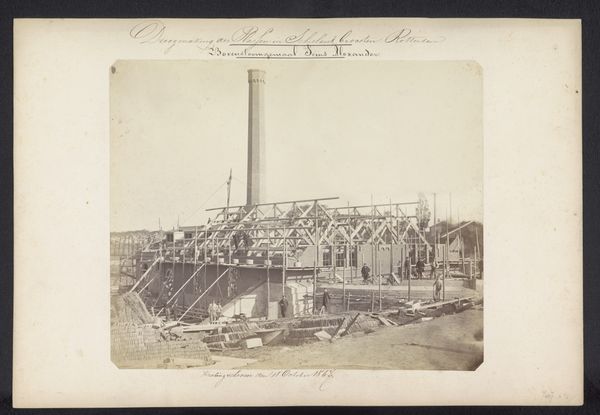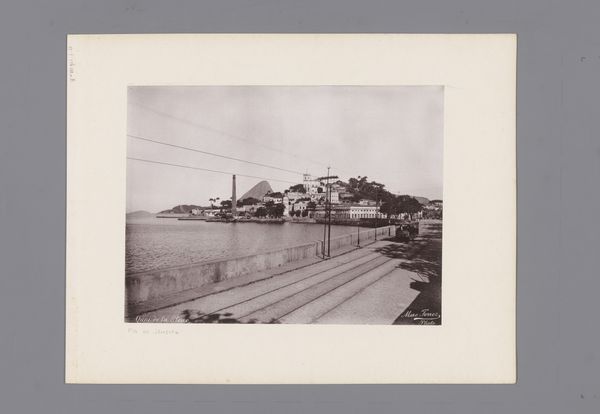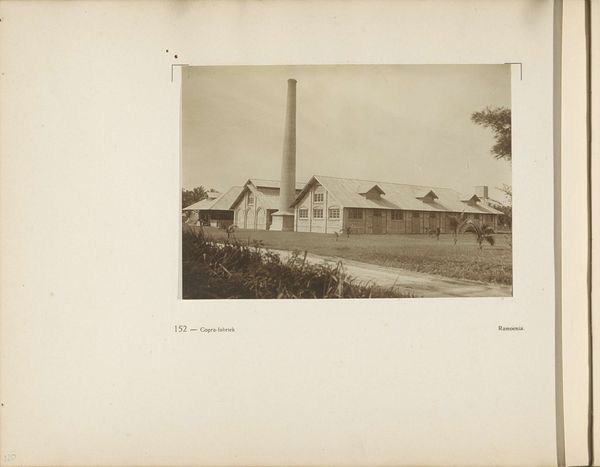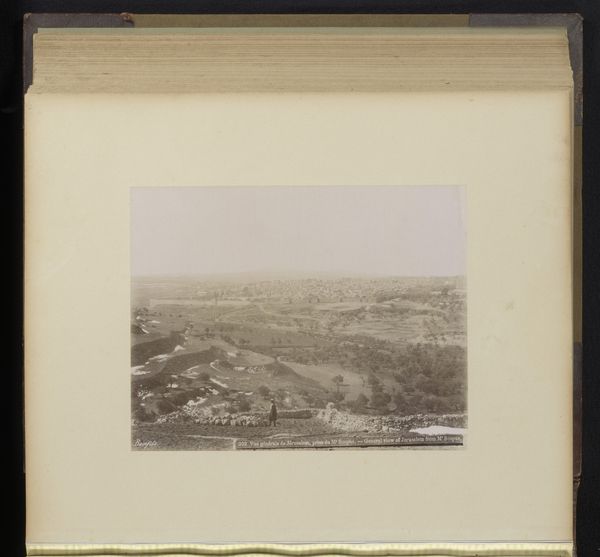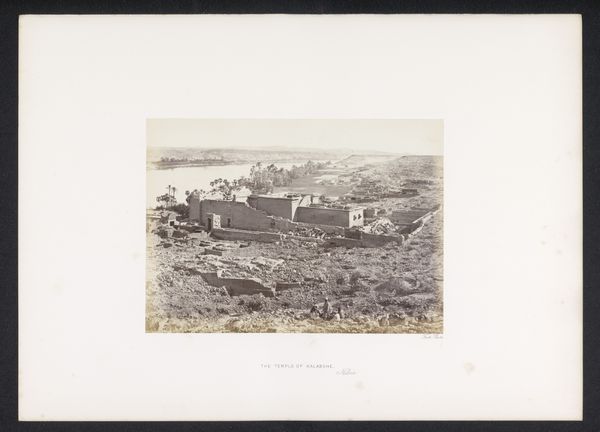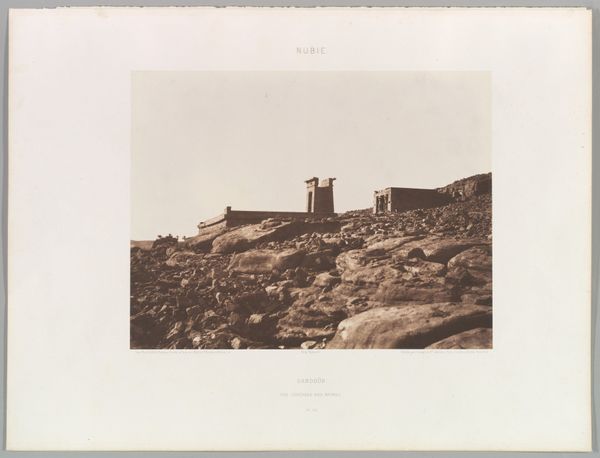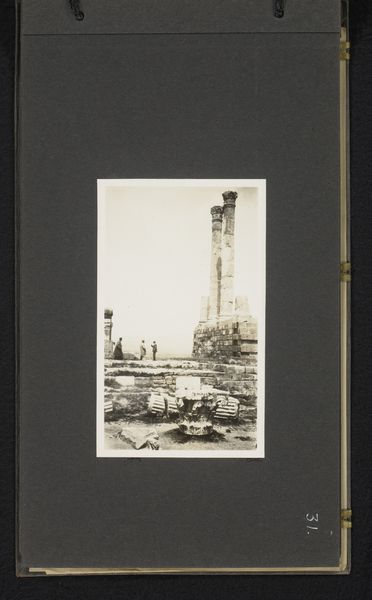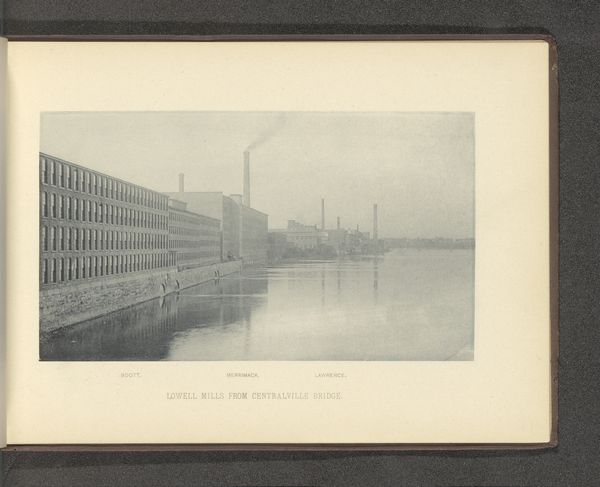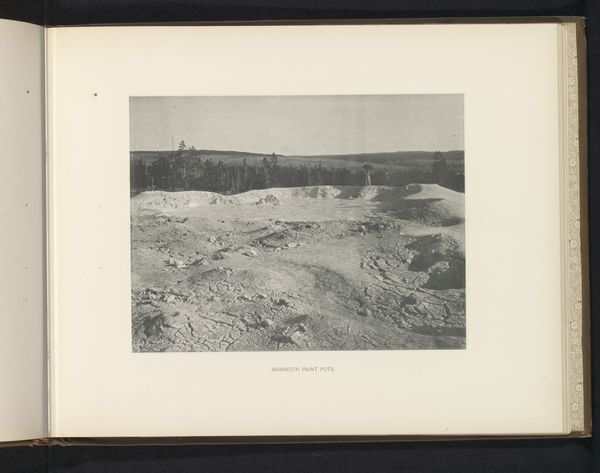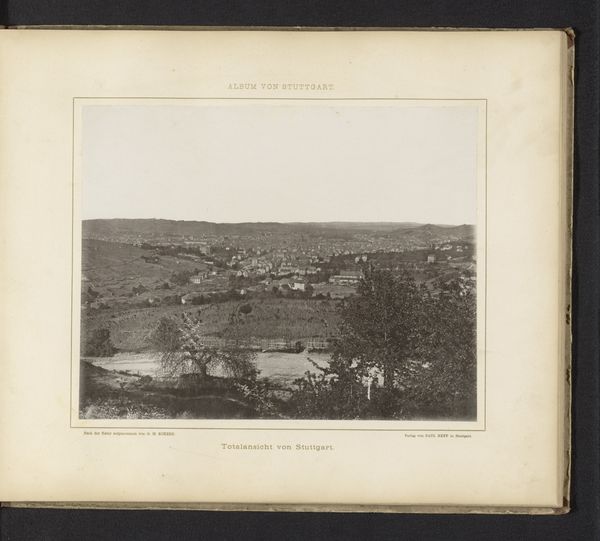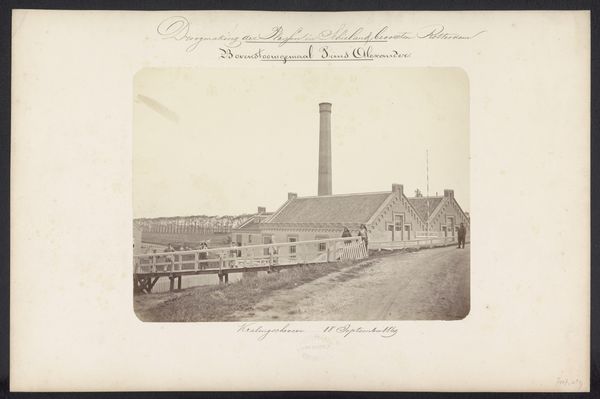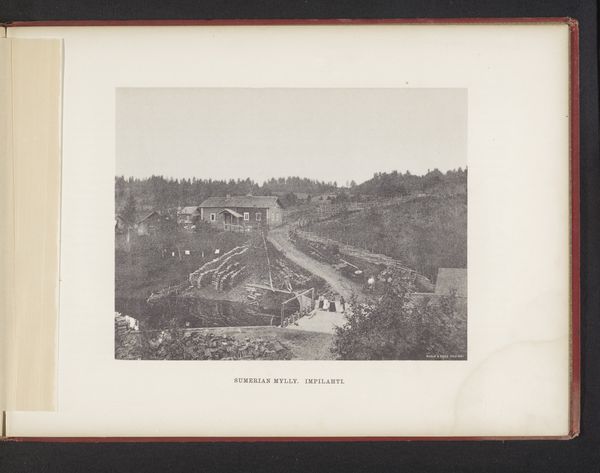
print, photography
# print
#
landscape
#
photography
#
realism
Dimensions: height 157 mm, width 226 mm
Copyright: Rijks Museum: Open Domain
Curator: Well, isn't this atmospheric! It reminds me of wandering through an abandoned industrial site, the air thick with stories. Editor: This photogravure print, dating from between 1888 and 1893, shows a scene captured by an anonymous photographer in Pitkäranta. The title, "Schoorstenen bij gebouwen en stapels hout," which translates to "Chimneys by buildings and stacks of wood" really sets the stage. It really speaks to an era grappling with industrial expansion. Curator: Exactly! You get this raw sense of human presence amidst a stark, almost brutal landscape. I'm particularly drawn to those massive wood piles in the foreground – it is like the entrails of the factory itself! They seem almost anthropomorphic. Do you see the face emerging from them? Editor: The relentless exploitation of natural resources, framed here in terms of a documentary aesthetic, lays bare an economy built on extraction. It's easy to miss but in the background, you can see water and land – one can imagine this photo as marking the intersection between the economic exploitation of the land and the human impact on ecological systems. Curator: Ah, and that contrast hits so clearly now. And what about the chimneys, reaching up like defiant fingers towards a smoky sky? Are they triumphant or pleading? Is the photographer perhaps saying: This is what we are, take it or leave it. Editor: They're ambiguous at best. Think of the workers toiling in these spaces, often in dangerous conditions, facing exploitation for meager wages. In that regard, these chimneys almost serve as monuments to the human cost of progress. Curator: Absolutely, and even formally, there is something striking about the textures – from the rough hewn wood to the slick metallic chimneys – it mirrors the frictions of industrial life itself. I also find myself thinking about all those who saw it and all those who will see it again after us. It makes this quite a powerful reflection. Editor: It really underscores how art can serve as a form of witness. Let’s leave our listeners pondering the interplay of environmental transformation and human experience as documented in this intriguing visual record.
Comments
No comments
Be the first to comment and join the conversation on the ultimate creative platform.
